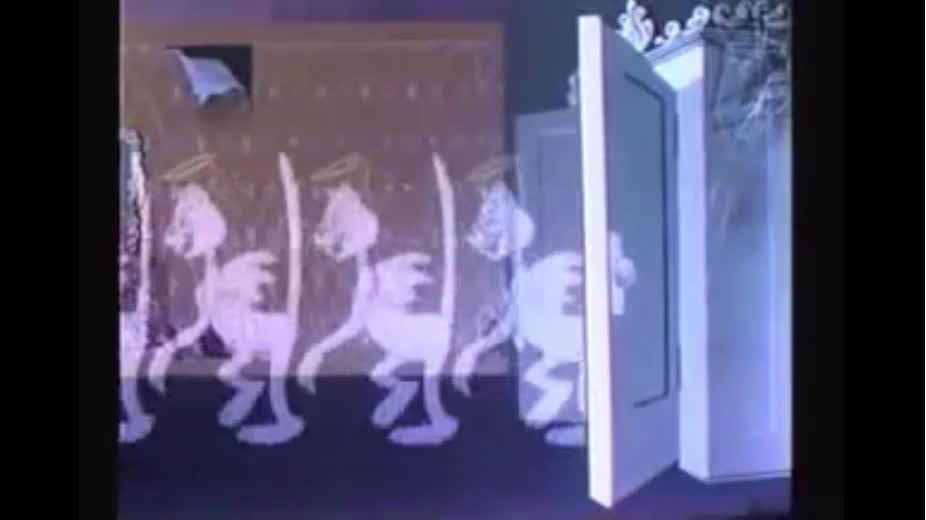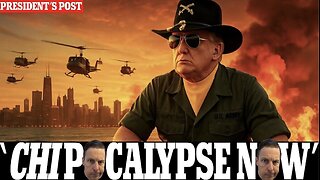Premium Only Content

Angel Puss c. 1944 : The Censored Eleven
The Censored Eleven is a group of Looney Tunes and Merrie Melodies cartoons originally produced and released by Warner Bros. that were withheld from syndication in the United States by United Artists (UA) in 1968. UA owned the distribution rights to the Associated Artists Productions library at that time and decided to pull these eleven cartoons from broadcast because the use of ethnic stereotypes in the cartoons, specifically African stereotypes, was deemed too offensive for contemporary audiences. The ban has been continued by UA and the successive owners of the pre-August 1948 Looney Tunes/Merrie Melodies. These shorts have not been officially broadcast on television since 1968 and have only been exhibited once theatrically by Warner Bros. in Spring 2010 (see below for more details) since their withdrawal. They have turned up, however, on low-cost VHS and DVD collections over the last thirty years.
https://en.wikipedia.org/wiki/Censored_Eleven
Angel Puss is distinct among the Eleven for other reasons besides Jones’s direction of it. It is the only “Looney Tunes” episode in the list. After 1943, all “Looney Tunes” were filmed in color, and Angel Puss was released in 1944. Also, this cartoon has no jazz celebrities or any of the Warner Bros. Cartoons major stars. The episode is unique among “Looney Tunes,” because it stars neither Porky Pig or Daffy Duck, at a time when nearly every episode between 1936 and 1944 stars either one of the characters or both. Finally, it is one of the last “Looney Tunes” produced before Leon Schlesinger retired from producing cartoons for Warner Brothers in 1944; thus, it is also Schlesinger’s last Censored Eleven film.
In Angel Puss, southern African American man Sambo who vaguely resembles Stepin Fetchit is tasked with drowning a cat. He is reluctant but does the job, or at least he thinks. The cat leads the man into thinking that it did drown, but it then disguises as a ghost and scares him for most of the film. When the man gets wise, he shoots the cat, and nine ghosts leave the cat’s body. The film is one of many in which Jones uses African or African American caricature. He had already made three cartoons starring an African boy named Inki (because of his dark skin, get it?), and another episode set in the South–Flop Goes the Weasel–depicts African Americans as birds.
Angel Puss brings the Censored Eleven into the era of stylization–the kind that the studio United Productions of America later implemented. When the cat scares the man, Sambo’s figure “pops” into bug-eyed takes. Sambo’s dashes away from the cat appear as linear smears. Jones had already started the pop-and-smear method with The Dover Boys, but he is able to use it to graphically modernize the old African American-scared-by-ghosts bit, which the studio had previously done in the Eleven episode Hittin’ the Trail for Hallelujahland.
Eddie Selzer replaced Schlesinger as producer after Angel Puss was made, but Selzer caught the criticism from African Americans who protested the film’s original release in 1944. The Pittsburgh Courier complained that a theater showed the cartoon with a “tolerance” movie called Americans All. Selzer simply responded that he had nothing to do with the cartoon’s production. The newspaper still called for the film’s withdrawal anyway but to no avail. It was never a “Blue Ribbon” reissue, but it became part of the television syndication package through
United Artists in the 1950s.
Any Warner Brothers cartoon accused of ethnic insensitivity in 1944 was almost certain to appear among the Censored Eleven in 1968, and Angel Puss made the list indeed. Both Sambo and the cat have dialects, as when the cat says, “Us ain’t kiddin’.” Sambo’s “Get goin’, feet,” resembles Fetchit’s catchphrase, “Feet, don’t fail me now.” Sambo’s design includes large lips and half-closed eyes, except when his eyes enlarge upon fright. The appropriation of Fetchit for Sambo is curious, because by then Fetchit’s prime as a movie star had passed. In fact, when Angel Puss was released, he had not appeared in a movie in five years. Still, Fetchit’s demeanor had become iconic by 1944 and, therefore, fair game for animators to caricature. That caricature became the cartoon’s undoing almost a quarter-century later.
https://cartoonresearch.com/index.php/the-censored-11-angel-puss-1944/
-
 2:16
2:16
Gorlag
4 years ago $0.04 earnedCensored content
368 -
 0:23
0:23
Wild Heart Aquatics
4 years ago $0.04 earnedAngel Fish
2451 -
 3:51
3:51
My Hanger Art
4 years ago $0.18 earnedHanger Angel
232 -
 4:28
4:28
trippyposse
4 years agoDetermined Angel
1301 -
 0:27
0:27
ScottysThoughties
4 years agoSeven Eleven
1141 -
 2:02
2:02
For The Love Of God Records
4 years agoProject Eleven Campaign
68 -
 3:30
3:30
ChurchBuilders
4 years agoAngel Flight #22
78 -
 2:16
2:16
ValGlass
4 years agoAngel Bead Process
2141 -
 1:32:54
1:32:54
Jeff Ahern
3 hours ago $21.89 earnedThe Saturday Show with Jeff Ahern
61.6K8 -
 LIVE
LIVE
TheManaLord Plays
4 hours agoMANA SUMMIT - DAY 1 ($10,200+) | BANNED PLAYER SMASH MELEE INVITATIONAL
294 watching